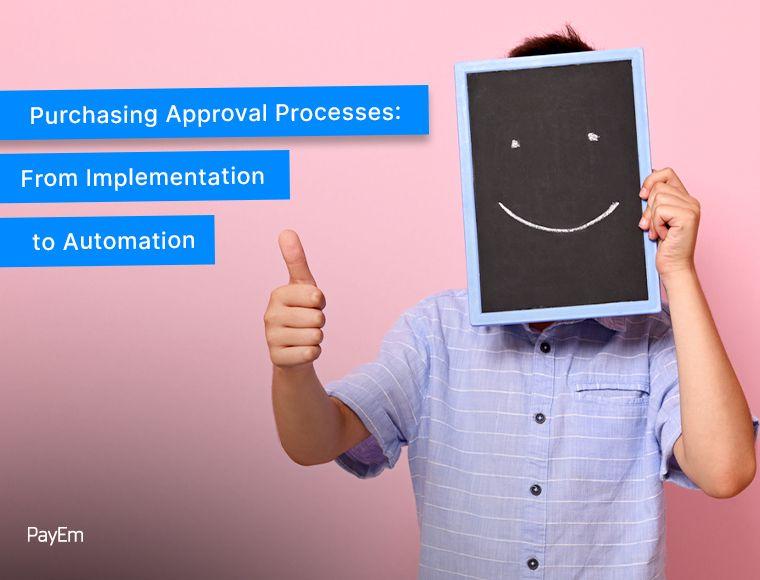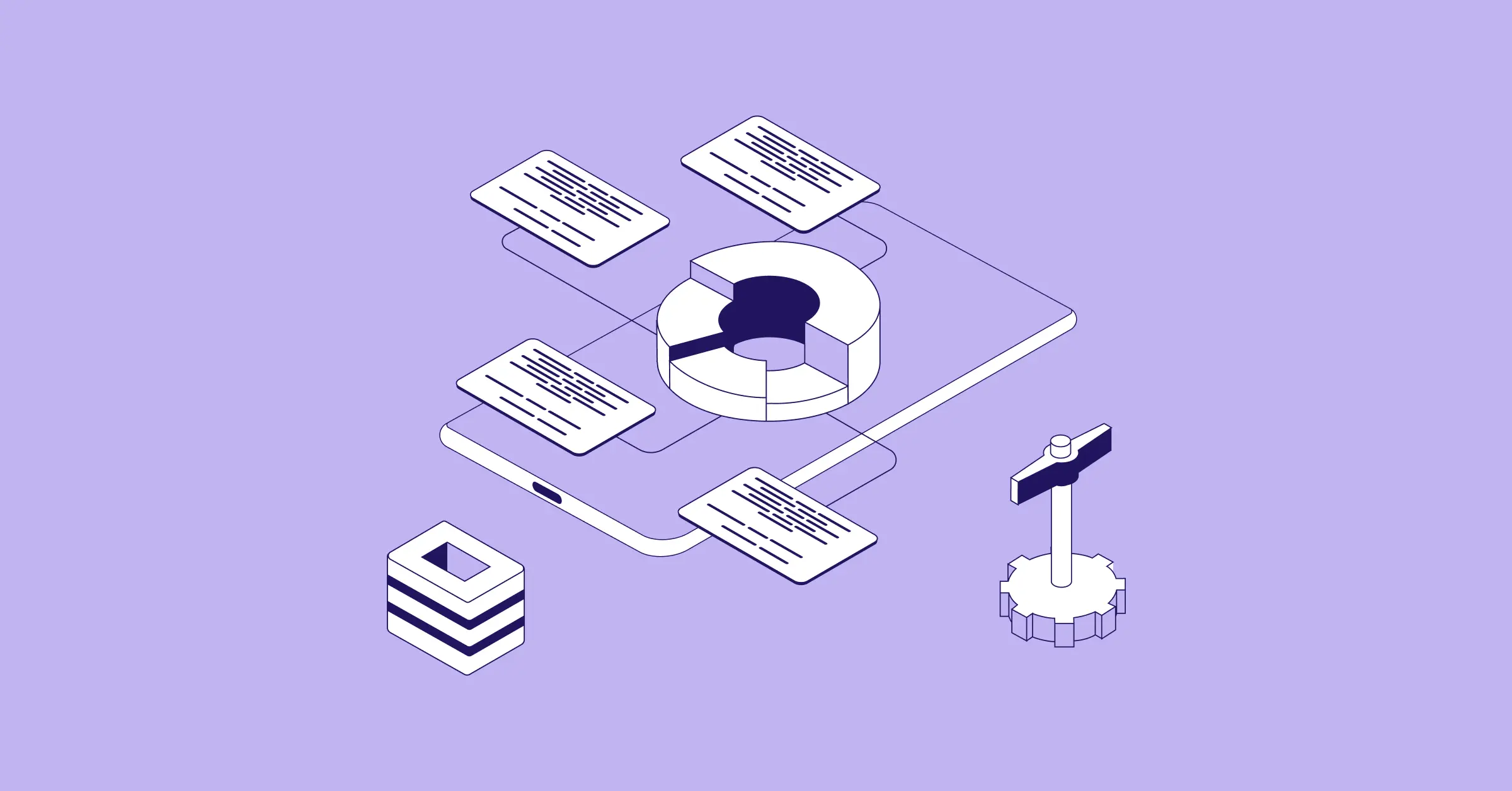November 03, 2022
Purchasing Approval Processes: From Implementation to Automation

Sign up for our newsletter
Stay informed with the latest trends and best practices in finance and procurement.

The goal of any for-profit business is to make money, plain and simple. However, even the most profitable enterprises are not mere money vacuums, meaning that they need to spend money as well, even in the pursuit of making it.
Called cash flow, money going in and out of a business can be relatively easy for small businesses to track. However, it can become exponentially more difficult as companies grow and scale. This difficulty, along with the understandable desire to maintain oversight over every cent spent and earned, leads to the implementation of purchasing approval processes.
This article will cover the following topics:
- What is a purchasing approval process, and why is it important?
- What must businesses consider when implementing purchasing approval processes?
- What steps are typically involved in purchasing approval processes?
- What are the benefits of purchasing approval processes?
- How can companies automate their purchase approval processes?
What is a purchasing approval process, and why is it important?
A purchasing approval process takes the guesswork out of outgoing payments, whether for procurement, SaaS subscriptions, office supply purchasing, or travel budget requests. More specifically, purchasing approval processes formalize and codify the method by which requests are approved, including definitions of the requester, the approver, and the amount requested.
Purchasing approval processes are essential for several reasons. The first significant reason comes down to a matter of efficiency, in that companies lacking set approval processes may struggle to track and log requests, particularly when submitted verbally or via email. Moreover, purchasing approval processes also help finance teams and relevant stakeholders to maintain overall fiscal transparency, with clarity possible down to every spent cent.
What must businesses consider when implementing purchasing approval processes?
Like snowflakes, no two purchasing approval processes are the same. Instead, when implementing new approval frameworks, there are simple elements that businesses must consider for the processes to take root and become successful. Those elements include the following:
1. Platforms
Certainly, there is more than one platform or tool on the market that businesses can use to implement purchasing approval processes, PayEm included. So, stakeholders must carefully consider which tool best fits their organization and its needs, including ERP integration requirements or potential automation capabilities.
2. Rules
The needs of every organization differs. The rules, policies, and regulations by which purchase requests may be submitted or approved vary wildly depending on the scenario or need. Therefore, those involved with implementation must consider every possibility, including amount thresholds and purchase types, to ensure the resulting processes can account for them.
3. Users
Who will submit purchase requests? Who will approve them? These questions, centered around access and permission, are essential for businesses planning their approval processes. To that end, companies must consider every touchpoint and ensure their approval processes are calibrated to those needs.
4. Organization Hierarchy
When it comes down to it, what is an approver? Is the VP of Finance or Procurement approving all employee requests? While this may be feasible for small businesses, it’s anything but for those that have dozens or hundreds of employees. At that stage, those implementing purchase approval processes must consider their org charts to determine what makes sense. For instance, in low-level cases, direct managers could have the final say, while larger or more technical requests might require director-level or finance team approval.
5. Corporate Culture
This is what everything ultimately boils down to - corporate culture. The implementation of purchase approval processes must gel with the existing company infrastructure and atmosphere - radical change being somewhat more difficult for larger organizations. Overall, who approves/submits what, when, and how is heavily dependent on the company in question, the answers to which they must determine for themselves.
What steps are typically involved in purchasing approval processes?
On the surface, purchasing approval processes are precisely as straightforward as they seem - submit a request, gain approval, and move on. However, this simplistic view belies the underlying policies, priorities, and concerns adhered to by those involved. To shed light on these elements, the typical purchasing approval process involves the following steps:
Step 1. Request Submission
The purchase approval process begins with the requester submitting a purchase request. In said request, the requester details the amounts, timelines, and reasons for the request, along with any supporting documentation.
Step 2. Approver Appraisal
Depending on the hierarchical organization of the company in question, more than one person may be required to fulfill the approval request. It is up to the approver(s) to ensure the request complies with any or all internal policies, along with the standard due diligence concerning relevance and need. From there, the approver may approve or deny the request.
Step 3. Purchase Order Creation & Delivery
Assuming the purchase request was approved, the purchase can move forward. This happens not just through the actual act of purchasing but also through creating a purchase order. Purchase orders act as a form of internal documentation that the purchase was approved and details concerning costs and deliverables.
Step 4. Invoice Processing & Reconciliation
Following the requested purchase, the requester must ensure possession of the invoice (e.g., proof of purchase) and submit it to their company’s finance department for proper documentation. This protects the organization from future audits, but it also assists controllers and finance teams when it comes to reconciling the books at the end of each month.
What are the benefits of purchasing approval processes?
It is difficult to overstate the benefits of having and implementing a purchasing approval process. Comparing companies that have one with those that do not is like comparing night and day or analog and digital. To illustrate this point, the following lists several of the benefits concerning purchasing approval processes:
- Reduced risk of human error
- More environmentally-friendly (e.g., paperless)
- Improves fiscal transparency
- Boosts visibility into corporate spend
- More efficient than manual processes
- Saves time
- Bolsters security
- Eliminates redundant or overlapping spend habits
How can companies automate their purchase approval processes?
Implementing a purchase approval process can be incredibly beneficial for any business. However, companies must also consider automating said process to truly take advantage of its benefits, particularly regarding efficiency.
With an automated purchase approval process, businesses can see even faster turnaround times, greater accountability, easier bottleneck identification, and improved centralization, to name a few benefits. To enact full automation, companies need to embrace solutions offered via Fintech, like PayEm.
PayEm takes every aspect of the approval process, from submission to approval, reconciliation, and beyond and introduces it to automation. This is the case not just for large companies but also for small or growing businesses. For a no-cost, commitment-free demo of the platform and its capabilities, contact PayEm’s experts here.


